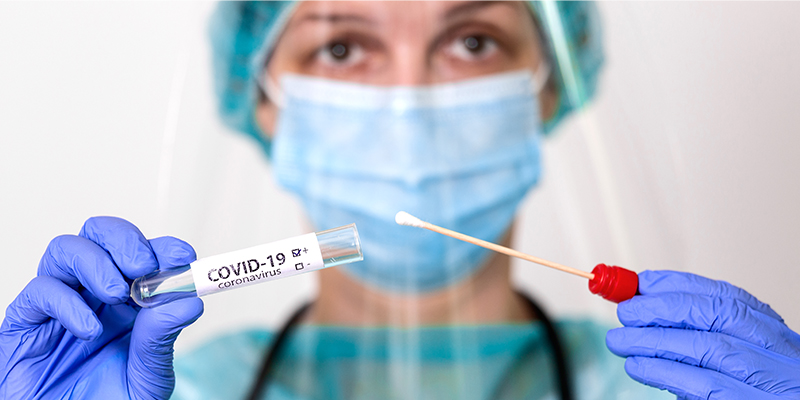The confirmation of COVID-19 being transmitted airborne, and the increasing number of cases every day, brings into sharp focus the importance of the laboratory diagnosis of the infection caused by severe acute respiratory syndrome coronavirus 2 (SARS-CoV-2). While diagnostic kits working on various platforms have already made inroads in the market, real-time reverse transcription-PCR (RT-PCR) for instance, COVIDsure Multiplex Realtime RT-PCR Kit is one of the most preferred testing method.
Due to highly contagious nature of the disease, a number of precautionary measures and safety considerations are being taken by healthcare practitioners, clinicians and researchers who are working with COVID samples. However, health personnel must have a clear understanding of certain issues existing in course of dealing with the pathogen or the disease itself.
Considerations for Specimen collection: In a span of about 5-6 days of the onset of symptoms, patients with COVID-19 tend to demonstrate high viral loads in the upper part of their respiratory tracts. A nasopharyngeal (NP) and/or an oropharyngeal (OP) swab is mostly advised for screening and diagnostic purposes.
Nasopharyngeal swabs are preferred for COVID sample collection as it is better tolerated by the patient and is safer for the clinician. Also, NP swabs have inherent quality control and they usually reach the correct area to be tested in the nasal cavity.
To properly obtain the NP specimen, the swab must be inserted deeper into the nasal cavity. Patients will most likely flinch, but that’s a sign that the right target spot has been reached. Once the right spot has been reached, the swab should be kept still for 10 seconds and then twirled three times before extracting out.
After collection, the swabs must be placed in a suitable transport medium like, Trivitron’s ViSure for safe and prompt transportation to the laboratory, ideally under refrigerated conditions.
Once the specimen in the transport medium is transferred into a cartridge in a class II biosafety cabinet, the cartridge must be sealed.
Consideration for specimen collection in patients with severe COVID-19: In ideal circumstances, sputum sampling or bronchoalveolar lavage should be performed for collecting lower respiratory tract specimen as they have yielded maximum viral load.
Patients who present severe respiratory distress due to COVID-19 may require intubation as well as respiratory isolation in a negative-pressure room. If possible, during this period, a lower respiratory tract sputum specimen must be obtained during intubation procedure itself. However, if needed, the bronchoalveolar lavage fluid specimen can be collected after intubation
Safety measures during processing of the specimen for PCR and testing: The processing of the specimen should be done in a class II biological safety cabinet, if not in biological safety level III (BSL-3). All laboratory protocols and appropriate work procedures should be followed and the safety cabinet must be placed in a negative pressure-room. For nucleic acid extraction, as in working with Trivitron’s RNAsure-COVID-19 RNA extraction kit, prior to RT-PCR processing, the specimen must be transferred to lysis buffer containing a guanidinium-based inactivating agent as well as a non-denaturing detergent. Being a reverse transcriptase method, the swabs used to collect the specimen should be instantaneously added to the lysis buffer for disinfecting the specimen as well avoiding the RNA from getting denatured.

